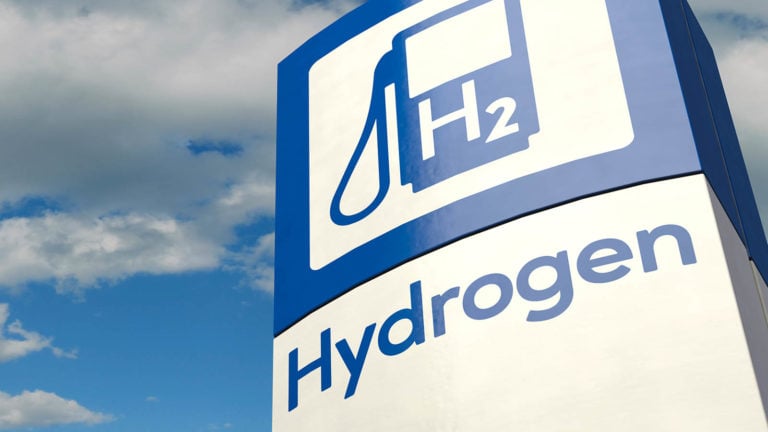
Source: DesignRage / Shutterstock.com
Hydrogen stocks are likely to continue to be in focus this year thanks to continued worries about global warming. Countries around the world remain committed to reaching net zero, which will require a combination of energy-saving measures, a push for renewable energy development, and the development and deployment of low-carbon solutions like hydrogen energy. It’s important to understand that not all hydrogen is clean hydrogen. Green hydrogen is the cleanest form, but there are an array of others that come with a smaller carbon footprint than traditional sources and therefore will likely see an uptick in usage.
It’s worth noting, that green hydrogen technology is still relatively new and as such comes with plenty of risks. Over the near term, investors can expect the market for green hydrogen to grow steadily as it’s applied to small, niche projects. During this period, we can expect to see plenty of innovation and change when it comes to green hydrogen technology. However come 2030 and beyond, the growth trajectory for the green hydrogen market is steep as it becomes a more reliable part of the global energy mix.
With that in mind, investors need to consider how they position their portfolio when it comes to hydrogen stocks. There are several different ways to play this trend, from specialist companies closely linked to hydrogen energy development to larger companies with a vested interest in the technology. The more specialist the company, the more of a pure play it will be. That means the gains have the potential to be larger, but the risks are headier as well. With that in mind, it makes sense for long-term investors to choose big names that stand to benefit from a boom in hydrogen, but will be less impacted by the near-term ups and downs as the technology gains traction.
Linde (LIN)
Linde (NASDAQ:LIN) is a well-established industrial gas company, and its experience within the sector means it’s a great long-term pick among hydrogen stocks. Linde’s strong position in the industry means it’s become a recognized name within the hydrogen and fuel cell market. The group’s working to up its hydrogen production to meet growing demand for the stuff. Importantly, the group is working on ways to lower the carbon emissions of non-green hydrogen with carbon capture and storage technology.
This side of the business comes with tremendous growth potential as energy companies look for ways to clean up their act without completely switching lanes. Carbon capture and storage is one way to do this, and Linde’s capabilities will be in high demand. The group’s already inked a deal with Exxon Mobil to move and store carbon dioxide, which could be the first of many big-time energy contracts as the technology develops.
Air Products (APD)
Air Products (NYSE:APD) is another industrial gas company, but it makes the list of hydrogen stocks for a slightly different reason than Linde. APD’s hydrogen arm is only a drop in the bucket right now, with its sprawling legacy portfolio bringing in most of its income. This translates into reliable income that, thanks to long-term contracts, is relatively predictable. The group’s putting that money to good use though— with some of that cash being funneled into building out a green hydrogen business poised to capitalize on the growth momentum ahead.
The group already has over 100 hydrogen plants under its umbrella, a number that should continue to grow alongside government support as more projects come online. For investors, APD offers an inroad to the push for green hydrogen without compromising stability and reliable cash flow. The core business will continue to hum along in the background, underpinning a reliable dividend and steady earnings growth.
BP (BP)
BP (LON:BP) may not be the first port of call when it comes to hydrogen stocks, but the group’s diversified energy business comes complete with exposure to hydrogen. BP probably isn’t the right choice for impact investors looking to fund clean energy with their investment— the group’s primary business is drilling for oil, a fact that probably won’t change anytime soon. However, BP is also set on diversifying to ensure the business is relevant in a low-carbon future. A big part of that is developing hydrogen energy.
BP is planning to control roughly 10% of the hydrogen market within its key geographies. In the UK the group says its plants could be responsible for 15% of the region’s 2030 hydrogen target. This is, of course, a long way off and a lot can change in that timespan. However, for investors looking for a diversified play on hydrogen, BP is worth a look.
On the date of publication, Marie Brodbeck did not hold (either directly or indirectly) any positions in the securities mentioned in this article. The opinions expressed in this article are those of the writer, subject to the InvestorPlace.com Publishing Guidelines.


